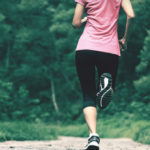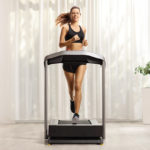Feel pain on the inner side your knee? Pes anserinus, or medial or inner knee discomfort, is also known as pes-anserinus bursitis.
You can also find six useful exercises to relieve pain and answers to common questions.
What is pes Anserine Bursitis?
What causes inner knee discomfort?
What causes friction or overexertion?
What are the symptoms?
What are some first aid measures you can take?
Pes Anserine Bursitis – 6 effective exercises for inner knee pain
Foam Rolling
Stretching
What is pes Anserine Bursitis?
Pes anserinus is a condition where three tendons conjoin on the inside of the shin. This complex structure is made up of many tendons that are susceptible to injury. It is located below the knee and the origin of three muscles. These muscles are responsible the inward rotation of the knee and the bending.
The pain is felt on the inside of the shinbone, directly below the knee.
Overexertion, friction or trauma (e.g. Direct hit) at the transition zone between muscles and tendons. This area also contains a bursa that can cause issues.
What causes inner knee discomfort?
Overexertion, friction or trauma can cause inner knee pain (e.g. A direct blow to the area where muscles and tendons transition into bone can cause inner knee pain. Here is a bursa that can also cause problems.
What causes friction or overexertion?
Pes anserinus is caused by walking on uneven surfaces or slopes for a long time, muscle imbalances, worn out running shoes, training one-sided, pelvic instability or gait issues (knock knees).
What are the symptoms?
First, there is usually a slight pain that occurs at the start of an exercise session. This pain will then subside. A lasting pain, along with swelling and tenderness on the inner side, will appear later. A crunching noise may be heard in the knee.
What are some first aid measures you can take?
Reduce your training if you have inner knee pain. Resting the area and cooling it (e.g. Ice packs can also be helpful. You can cycle with full range of motion if the pain disappears. You should also replace worn-out shoes (running) regularly.
Expert tip:
Consult a doctor if you don’t see improvement after self-treating pes anserine Bursitis. Additional relief can be provided by manipulative (fascial), leg axis exercises, ultrasound, antiinflammatory medications, shockwave therapy and knee injections. Other causes of problems may be clarified by specialists.
Pes Anserine Bursitis – 6 effective exercises for inner knee pain
Six exercises that can help relieve pain. Please be aware that:
You should consult your doctor if you don’t see improvement after trying to treat the pes anserinus yourself. Additional relief can be provided by manipulative (fascial), leg axis, ultrasound, antiinflammatory medications, shockwave therapy and knee injections. Other causes of problems may be clarified by specialists.
Foam Rolling
- Hamstrings Relaxation
Place the foam roller under your hamstrings on the affected side. Place the foam roller on the side that is affected. You can shift your weight by lifting your butt. You can use your upper body as a lever to move backwards and forwards, while rolling the foam down the length of your legs. Roll very slowly. Repeat this exercise as often as possible.
- Relaxation of quadriceps
Stretch out the leg that hurts. Stretch the affected leg. Place the foam roller underneath your quad. Roll it down the length of your thigh. Roll very slowly. Repeat this exercise as often as possible.
- Foam Rolling directly on the Pes Anserinus
All fours is the best way to get on your feet. Then, lift the knee that is affected. Position the foam roller directly below the pes anterinus (the inner surface of the shin, just below the knee). Slowly roll the foam roller back and forth.
Caution:
Do not push yourself beyond your comfort level. This exercise can be repeated as many times as possible.
Stretching
- Stretching your hamstrings
Step into the hurdle stretch. Stretch the leg in front of you that hurts. Your upper body should be bent toward your foot. Straighten your spine. Your hamstrings should be stretched. Hold the stretch for 60-90 seconds.
- Stretching the Quads
You can stretch your leg by lying on your side. To stabilize your pelvis, slightly bend the bottom leg. Grab your foot and pull it towards your butt. The quads, the front of your thigh, should be stretched. Do not arch your back. Hold this stretch between 60 and 90 seconds.
- Cobbler’s Pose
In the cobblers’ pose, sit. Your upper body should be bent forward. Push your knees toward the floor using your elbows for an effective stretch. The stretch should be felt in the inner thighs. You should not arch your back. Hold this stretch between 60 and 90 seconds.
Related Articles
Knee pain when running? What is runner’s Knee or IT band Syndrome?
Do you have knee pain after running? Jumper’s Knee (also known as patellar tendonitis).
You are not sure what knee problem you have. You can check your symptoms









